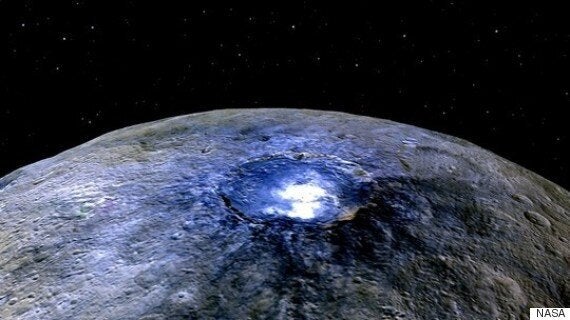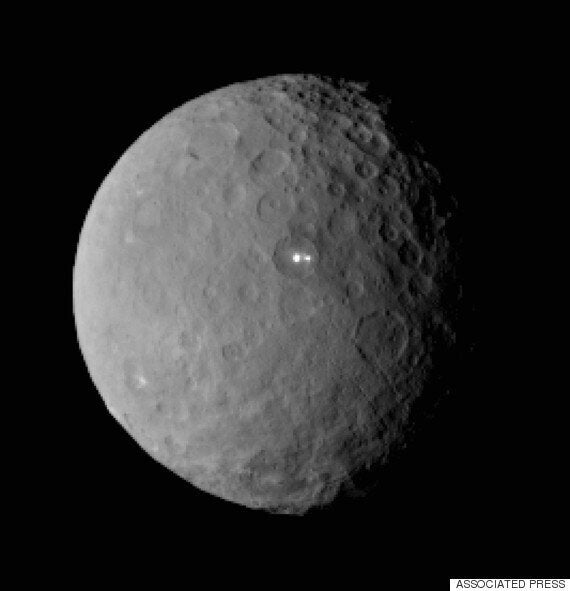Science has finally placated alien hunters and space enthusiasts with their latest explanation for Ceres' bright lights.
A new study, published in Nature, suggests that salts are the most probable reason for the puzzling spots.
Their measurements suggest the bright regions contain hydrated magnesium sulphates, formed by magnesium, sulphur and oxygen.

These spots have been alien to us for quite some time, with NASA scientists scratching their heads as to what could be the underlying cause.
The space agency launched a poll asking the public to vote on the "mysterious bright spots," with the answers including salt deposits, ice, rocks, geysers, volcanoes and other."

With the latest research, scientists have been able to put together more of the puzzle as the findings suggest Ceres has an outer shell and an inner core.
SEE ALSO:
"Of particular interest is a bright pit on the floor of crater Occator that exhibits probable sublimation of water ice, producing haze clouds inside the crater..." the paper stated.
"Slow-moving condensed-ice or dust particles may explain this haze. We conclude that Ceres must have accreted material from beyond the ‘snow line’, which is the distance from the Sun at which water molecules condense."
When the Dawn spacecraft began sending images of Ceres -- largest body in the main asteroid belt between Mars and Jupiter -- the lead team said the images were a surprise.
Andreas Nathues, lead investigator for the framing camera team explained: "The brightest spot continues to be too small to resolve with our camera, but despite its size it is brighter than anything else on Ceres. This is truly unexpected and still a mystery to us."